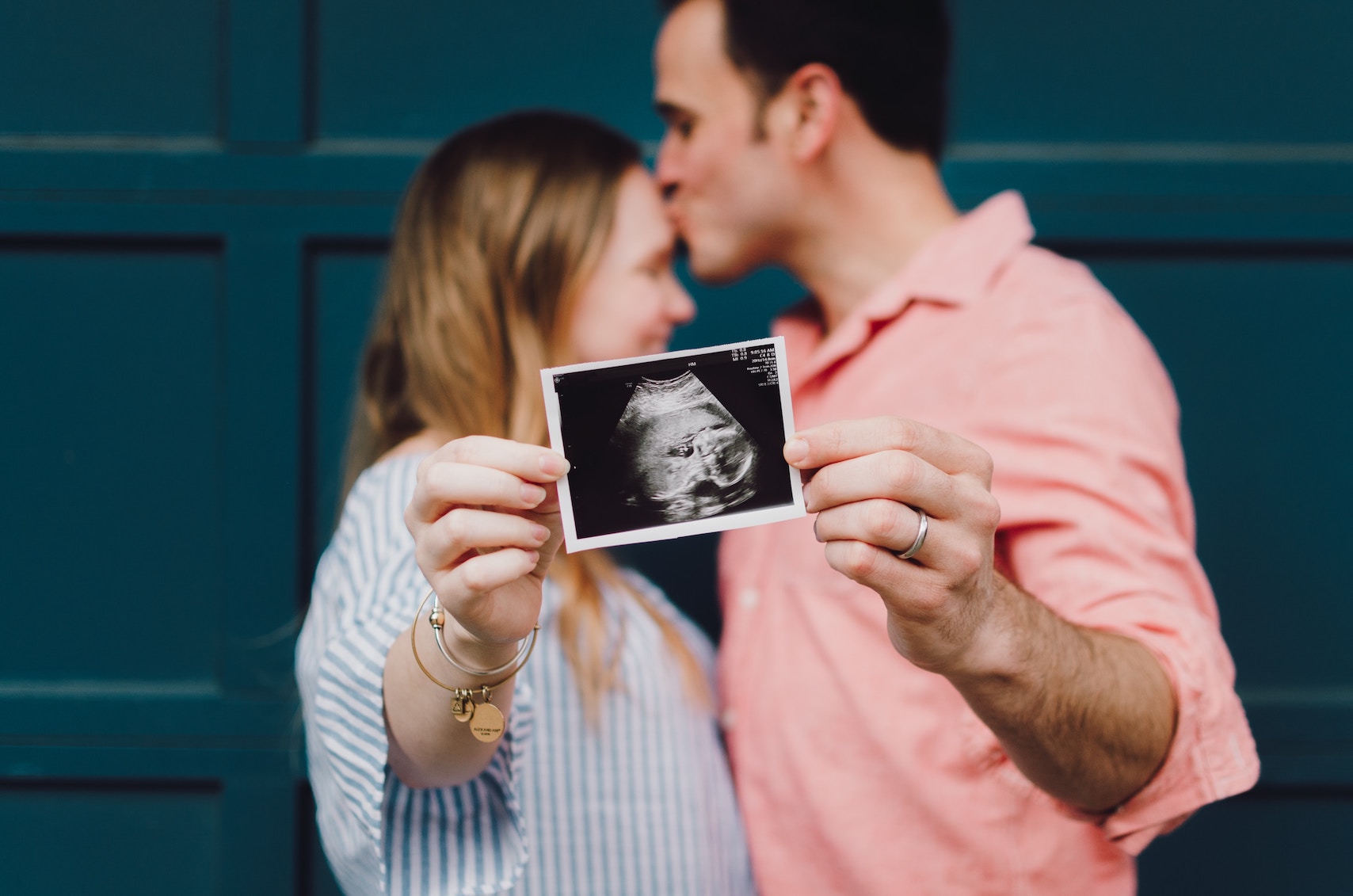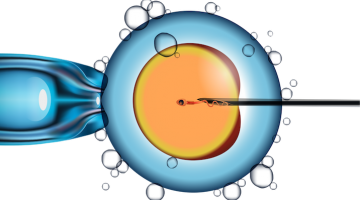Getting Pregnant After a Tubal Ligation: With and Without a Reversal

If you’re wondering if you can get pregnant after a tubal ligation or how to get pregnant after having a tubal ligation, you’ve come to the right place. In short, the answer is most often yes, but the how of that is a bit more complex and will take a bit of time. But don’t worry, in this article, we are going to cover everything you need to know about how to get pregnant after a tubal ligation both with and without a tubal ligation reversal. Let’s start with a quick introduction to the options:
- Tubal Ligation Reversal – A Tubal Ligation Reversal or Tubal Reversal (TR) is exactly like it sounds. It is the surgical repair or reversal of a tubal ligation.
- In Vitro Fertilization (IVF) – In Vitro Fertilization or IVF is the process of removing eggs from a female’s ovaries and fertilizing said egg(s) with sperm in a petri dish. After developing the embryos inside a laboratory for several days (usually 3-5), an embryo is then transferred back into the female’s uterus to develop for the remainder of gestation.
Both options can lead to a healthy pregnancy and child, but there are a few things to consider along the way with the guidance of your tubal ligation reversal doctor, often an OBGYN or Reproductive Endocrinologist.
It’s also important to note that these two methods are used for those intentionally trying to get pregnant after a tubal ligation. Surprisingly, a natural or spontaneous pregnancy after tubal ligation is possible without any medical intervention. Of course, finding out your pregnant naturally after a tubal ligation would likely come with a shocking exclamation of “I am pregnant after tubal ligation!? How?” And that is a good question. So, before we jump into intentionally getting pregnant after tubal ligation, let’s quickly touch on the chance of getting pregnant after a tubal ligation naturally (without a reversal and without IVF).
Spontaneous Pregnancy After Tubal Ligation – what are the chances?
The chances of getting pregnant naturally after a tubal ligation are low and that’s generally a good thing. After all, people typically have tubal ligations as a form of permanent birth control. But, those odds might not be as low as you would expect.
According to a large study that followed over 10,000 women with tubal ligations, 143 sterilization failures were reported . While that’s only about 1.5%, it’s probably higher than you would suspect given tubal ligations are often advertised as a near foolproof form of permanent birth control. Interestingly, the odds depend greatly upon the type of tubal ligation performed.

Now that we’ve covered the rare natural pregnancy after tubal ligations, let’s jump into medical treatments that those with tubal ligations can use to have a baby when they are actively trying to grow their family.
How to Get Pregnant After Having Tubes Tied: Tubal Ligation Reversal
In learning about a tubal reversal, it’s important to understand the basics of tubal ligation. During the elective sterilization via tubal ligation, a surgeon in one way or another blocks the ability of eggs and sperm meeting. Most often, this is done by closing some portion of the fallopian tube itself, but can be done by removing the tube entirely.
In a Tubal Ligation Reversal, or tubal (re)anastomosis as it is medically known, a surgeon repairs and reconnects both the left and right fallopian tubes by carefully reopening (and reattaching) the surgically closed portions of the tubes. This allows the sperm and egg to once again travel into the tubes, meet, fertilize, travel back down the tube, and implant in the uterus. Of course, this requires enough tube present to reconnect and repair.
In most cases, a tubal ligation is reversible. The fact that women with tubal ligations have been pregnant before also bodes well for their chances for a successful subsequent pregnancy, pending any significant time or other medical developments.
IVF – How to Get Pregnant After a Tubal Ligation Without a Reversal
As mentioned, IVF is a common fertility treatment and one of the ways you can get pregnant after having your “tubes tied.” IVF offers the highest odds of pregnancy each month of any technology or treatment available with the chance of getting pregnant as high as 50 or 60% in the best of circumstances (compared to only 20% each month when trying to conceive naturally as a 20-year-old).
With IVF, a fertility clinic performs all the functions of the fallopian tubes, including collecting the egg(s) from the ovaries, fertilization, culture of the fertilized egg and embryos, and finally transfer of the embryo into the womb. In other words, IVF completely bypasses the fallopian tubes making it possible to get pregnant without any functioning tubes.
Comparing Your Options: Things to Consider When Deciding Between IVF and Tubal Ligation Reversal
The decision to have a tubal ligation reversal or proceed with IVF can be complex, factors in many individualized medical and personal considerations, and should always be made with a doctor. While it will often remain a completely personal decision, there are many factors that point a patient in one direction or the other, including:
Age:
Age is a significant factor for fertility (particularly female fertility). Female fertility declines sharply after the age of 35 making the odds of conceiving naturally smaller and smaller as time goes by. A 35-year old who is otherwise healthy with no known fertility issues has roughly a 15% chance of conception each month. A healthy 40-year old, on the other hand, has only a 5% or less chance of conceiving with roughly a 40% chance of miscarriage (compared to only a 15% chance of miscarriage for their younger counterpart).
If the patient is older than 35, the prognosis for doing a tubal reversal is lower due to the simple fact that fertility in women declines sharply after the age of 35, so the odds of attaining a pregnancy naturally after the surgery are lower. IVF tends to be a better option because it gives patients the highest chance of pregnancy in the shortest amount of time.
Male Factor Infertility:
Male infertility accounts for roughly 33% of infertility cases, and 50% when you include couples who have a combination of both male and female issues working against them. Because of this, it’s very important for the male partner to have a semen analysis. Even if the man has a history of fathering children, male fertility can decline for a number of reasons, so it is important to have a semen analysis performed within one year prior to the surgery.
If semen analysis results indicate male factor infertility (less than 10 million motile sperm), IVF is usually the recommended course of action. With less than 10 million sperm, the probability of a sperm finding the egg on its own is low, even when using other fertility treatments such as IUI.
Maintaining Contraception:
Some wish to have only one child and maintain their contraception past the delivery of that child, where others wish to have multiple children. If the patient wants to maintain contraception past the delivery of one healthy child, then IVF would usually be recommended.
Likelihood of Success:
The likelihood of success varies greatly for both procedures, so it’s important to discuss all of these factors with your Tubal Ligation Reversal or IVF Doctor to determine if you’re a good candidate for tubal reversal surgery or if you should consider In Vitro Fertilization (IVF), and also to discuss the pros and cons of both options and your individual chances for success.
Tubal Reversal Success Rates: Dr. Robert Kiltz, a reproductive endocrinologist at CNY Fertility advises that, “As long as there is sufficient length of the fallopian tube to reconnect the ends and the tubes are functioning properly, we anticipate a 60-80% chance of patients conceiving naturally within two years of their reversals if under the age of 35.”
Generally speaking, higher success rates after tubal ligation reversal can be expected when there is more length of tube available for repair and when the previous ligation interrupted the mid-isthmic portion of the tube.
Your chances of conceiving after a tubal reversal are highly dependent on your personal health and fertility history and a number of other factors, including:
- How long ago your tubal ligation was performed and what method was used (see below)
- Location of sterilization (e.g. where along your tubes) – most sterilizations are performed at the middle of the tube. If yours was closer to the uterus, your chances of reversal success may be lower.
- Your age
- Partner’s (or donor’s) sperm quality
- Underlying pelvic problems such as endometriosis and/or fibroid tumors
- Ovulation function
- Number of eggs
- Your weight and lifestyle habits
- Qualifications/skills of the surgeon performing tubal reversal surgery
A tubal reversal will not be successful if the fimbriae of the tube were damaged or removed as part of the tubal ligation procedure.
IVF Success Rates:
Similar to tubal reversal success rates, women under the age of 35 generally have about a 70% chance of a live birth within one year of starting IVF treatment. This, however, may require multiple individual IVF cycles as the per-cycle success rate for IVF tops out at around 50% per cycle.
The Treatment Process:
The treatment process is substantially different for a tubal reversal versus IVF.
A tubal ligation reversal procedure takes approximately 90 minutes. It does include some recovery time, but because tubal reversals are often done laparoscopically, recovery time is reduced. While it is encouraged to take around a week off work, most women resume walking the day of their operation and return to an exercise/work-free version of their daily routine the next day.
IVF is a rather lengthy process spanning anywhere from 3 weeks to about two months if choosing to do a frozen embryo transfer (FET) or genetic testing (which requires an FET). It generally includes 4-7 visits to the office (consisting of monitoring appointments, as well as two procedures, the egg retrieval, and embryo transfer) and 10 days of injectable medications.
Recovery:
Because tubal reversal surgeries are performed laparoscopically through a small incision in the lower abdomen, they are minimally invasive, recovery usually involves only moderate pain and discomfort, and is fairly quick. The surgery itself takes approximately 90 minutes and enables most women to conceive naturally without the use of fertility medications. Most women can resume walking the day of their operation and return to an exercise-free version of their daily routine the next day.
Tubes should be sufficiently healed about 1 month after reversal surgery, but your abdomen may still be tender from surgery for a couple of weeks. Usually, after your second period, you may have sex and attempt to get pregnant. In some cases, after your first.
Ectopic Pregnancy:
With tubal ligation reversal, there is a chance of ectopic pregnancy, when the fertilized egg implants in the fallopian tube instead of the uterus and pregnancy must be terminated. About 10-20% of reversal patients have ectopic pregnancies. This chance is reduced with IVF.
Personal Preferences:
Patient comfort is also an important consideration as well. Some patients prefer to get pregnant naturally as opposed to medically. If this is the case, and they don’t mind the increased risk of having an ectopic pregnancy, then that might be another reason for them to consider a tubal reversal as opposed to IVF.
Cost
After having a tubal ligation, both a tubal ligation reversal and IVF are most often considered an elective procedure and rarely covered by health insurance, Medicare or Medicaid. Fortunately, CNY Fertility, the nation’s most affordable fertility clinic, offers the cheapest IVF in the United States, and has affordable tubal reversal surgery which includes an incredible “insurance” policy.
Tubal Reversal: At CNY Fertility, tubal reversals which are done at the Syracuse, NY location, are $4,995 and include a discounted IVF cycle ($2,995)
By comparison, the national average cost of a tubal reversal is a little over $8,000. However, depending on where you live and what tests and procedures you need beforehand, costs can range from $5,000 to $21,000 and certainly won’t include an IVF discount.
IVF: The national average price for basic IVF is $12,000, but this number reflects only the portion billed by the fertility clinic itself. It excludes critical things like IVF medications or ICSI. Once you include the costs of these necessary “add on” services, $20-25,000 is a more accurate figure for comparison, although total costs can go even higher based on your unique situation or if a couple requires multiple rounds of IVF to conceive.
At CNY, the base cost of IVF is $3,995 (without the tubal ligation reversal discount). With medications, monitoring, and other services, the total cost of IVF looks more like $7-12,000. CNY also has payment plans with no credit requirements available for everyone.
Who is an Ideal Candidate for Tubal Reversal?
“Patients who benefit most from a tubal reversal are generally younger (under 35) with no other fertility factors whose ligation was performed using a clip or a silastic band without the use of cautery,” says Dr. Ditkoff. “Cautery can cause thermal damage bilaterally at the site of the tubal ligation and could cause destruction to the tubes that lessens the prognosis for a successful tubal reversal.”
A patient who wants a reversal should have a fallopian tube that is at least 6 cm. in length. A patient with a significantly ligated portion of her tube, leaving her with a shortened tube or a fallopian tube without a fimbriated end, is not a good candidate for a tubal reversal either.
A patient’s age and whether they’re interested in getting pregnant more than once are also important consideration. If the patient is open to getting pregnant in the future, is young and fertile, which improves their reasoning for having a tubal reversal. The older the patient, the less fertile that patient is and typically the more aggressive that treatment should be, the recommendation usually being IVF.
Who is an Ideal Candidate for IVF?
If the fallopian tubes were cauterized during ligation, if the patient is older, if there’s a male factor, then the likelihood of pregnancy with a tubal reversal is lower and chances for success with IVF are much higher. The other reason for recommending IVF would be if the patient desires to preserve their fertility for other children in the future and they want to maintain their contraception, then you would not want to reverse the fallopian tubes.
Scheduling a Tubal Reversal or IVF Consultation:
“It’s been my experience that many women who want to get pregnant after tubal ligation are older, so time is of the essence. We’ll help evaluate all of the factors at play and determine the best solution for each individual so they can have the little bundle of joy they’ve been dreaming about,” Dr. Ditkoff shares.
Indeed, with a little bit of medical history, some male and female fertility testing, and an honest discussion with your reproductive endocrinologist about your goals, future pregnancy can become a reality for most women who’ve had their tubes tied.
If you’ve had a tubal ligation and would like to discuss your fertility options, CNY Fertility is ready to help. After becoming a patient, our financial team will be more than happy to assist you in reviewing all of your associated costs. Schedule your consultation today or give us a call 1-844-315-BABY. We’re here for you every step of the way!




